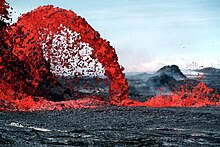The periodic table of elements classifies, organizes and distributes various chemicals, according to their properties and characteristics.
Usually attributed Dmitri Mendeleev's table, who ordered the items based on the manual variation of the chemical, while Julius Lothar Meyer, working separately, conducted a system from the physical properties of atoms. The current form is a modified version of Mendeleev, was designed by Alfred Werner.
Groups
Main article: Group of the Periodic Table A vertical column of the periodic table are called groups. All elements belonging to a group have the same valence atomic and therefore have similar characteristics or properties with each other. For example, elements in group IA have valence 1 (one electron in its last energy level) and all tend to lose that electron to the positive ions bind as +1. Items in the last group on the right are the noble gases, which have filled their last energy level (octet rule) and therefore are all extremely unreactive.
Numbered from left to right, according to the latest IUPAC recommendation (and brackets under the old proposal of the IUPAC), the groups of the periodic table are:
Group 1 (I A): the alkali metals
Group 2 (IIA) Alkaline earth metals
Group 3 (III B): Family of scandium
Group 4 (IV B): Family of Titanium
Group 5 (V B): Family of vanadium
Group 6 (VI B): Family Chrome
Group 7 (VII B): Family of Manganese
Group 8 (VIII B): Family of Iron
Group 9 (VIII B): Family of Cobalt
Group 10 (VIII B): Nickel Family
Group 11 (IB): Copper Family
Group 12 (IIB): Family of Zinc
Group 13 (IIIA): the earth
Group 14 (IV A): the carbonoideos
Group 15 (V A): the nitrogenoideos
Group 16 (VI A): the chalcogens or anfígenos
Group 17 (VIIA): the halogens
Group 18 (VIII): noble gases








